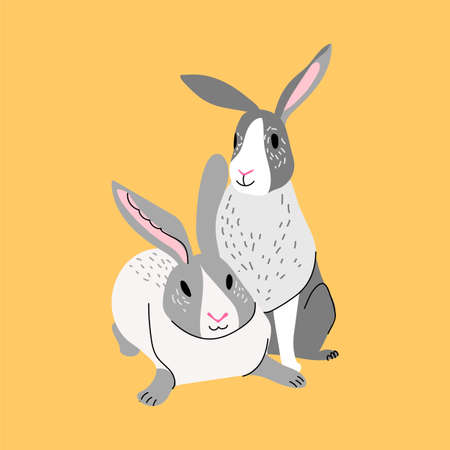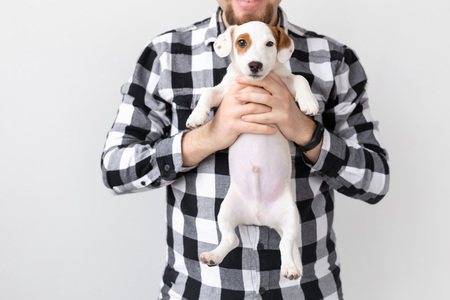1. Body Language and Posture
Understanding how small pets use body language to communicate their well-being, stress levels, and comfort is essential for responsible pet ownership. Since they cant speak, their posture, movements, and facial expressions provide valuable clues about their health and emotions.
Recognizing Signs of Comfort
When a small pet feels safe and comfortable, they display specific body language that indicates relaxation. Here are some common signs:
| Behavior | What It Means |
|---|---|
| Relaxed body posture | The pet sits or lies down in a natural position without tension. |
| Purring (for some species) | Certain small pets, like guinea pigs, may purr softly when content. |
| Grooming | If a pet is calmly grooming itself, it often means they feel secure. |
| Slightly closed or blinking eyes | A sign of trust and relaxation. |
Signs of Stress or Discomfort
If a small pet is experiencing stress or discomfort, they will exhibit different body language cues. Recognizing these early can help prevent health problems or distress.
| Behavior | Possible Concern |
|---|---|
| Crouching with wide eyes | The pet may feel threatened or scared. |
| Trembling or shaking | A sign of fear, stress, or possible illness. |
| Biting cage bars excessively | This could indicate boredom, anxiety, or dental issues. |
| Aggressive postures (raised fur, lunging) | The pet may feel defensive or unwell. |
| Lack of movement or hiding often | This could be due to fear, illness, or depression. |
The Importance of Observing Changes in Behavior
A sudden change in your pet’s body language may indicate a health issue that needs attention. For example, if your normally active hamster suddenly becomes lethargic and avoids interaction, it might be experiencing an underlying medical problem. Regularly observing their posture and movements can help you identify issues early and ensure they receive proper care.
Tips for Encouraging Comfort in Small Pets
- Create a quiet and safe environment to minimize stress.
- Avoid sudden loud noises or quick movements that might startle them.
- Provide plenty of hiding spots so they feel secure when needed.
- Mimic their natural habitat as much as possible with appropriate bedding and toys.
- If you notice persistent signs of stress or discomfort, consult a veterinarian for advice.
A Final Thought on Body Language Awareness
Your small pet relies on subtle physical cues to express how theyre feeling. By paying attention to their body language and posture, you can better understand their needs and provide the best possible care for their overall well-being.
2. Changes in Eating and Drinking Habits
As a pet owner, keeping an eye on your small pet’s eating and drinking habits is essential. Any noticeable changes could be a sign of an underlying health issue. Whether your pet is suddenly eating less, drinking more, or showing unusual behavior around food and water, these shifts can provide valuable insights into their well-being.
Recognizing Appetite Changes
Small pets, like rabbits, guinea pigs, hamsters, and ferrets, typically have consistent eating patterns. A sudden decrease or increase in appetite might indicate digestive problems, dental issues, or even stress. Here’s what to watch for:
| Appetite Change | Possible Causes |
|---|---|
| Eating less than usual | Dental pain, gastrointestinal issues, infections, or stress |
| Eating more than usual | Nutritional deficiencies, metabolic disorders, or increased activity levels |
| Avoiding certain foods | Sensitive teeth, digestive discomfort, or dislike of new diet changes |
Monitoring Hydration Levels
Your pet’s water intake can also reveal a lot about their health. Too much or too little water consumption may indicate conditions such as kidney disease, diabetes, or dehydration. Be sure to observe how often they drink and check their water bottle or bowl regularly.
| Water Intake Change | Potential Health Concerns |
|---|---|
| Drinking more than usual | Kidney issues, diabetes, excessive heat exposure |
| Drinking less than usual | Pain while drinking, illness, lack of access to fresh water |
| No interest in water at all | Poor health condition requiring immediate veterinary attention |
When to See a Vet?
If your small pet exhibits any drastic changes in their eating or drinking habits for more than 24 hours, it’s best to consult a veterinarian. Loss of appetite combined with lethargy or weight loss can be serious signs of illness. Early detection and treatment can make all the difference in ensuring your pet stays happy and healthy.

3. Unusual Vocalizations or Silence
Small pets, such as rabbits, guinea pigs, hamsters, and ferrets, have unique ways of communicating. While they may not bark or meow like dogs and cats, their vocalizations—or sudden lack of them—can reveal important clues about their health and well-being.
Recognizing Changes in Sounds
If your small pet starts making noises that are unusual for them, it could be a sign of discomfort, stress, or illness. For example:
| Pet Type | Normal Sounds | Unusual Sounds |
|---|---|---|
| Guinea Pigs | Purring, wheeking (high-pitched squeals), chutting (content sounds) | Loud shrieks (pain or fear), teeth chattering (aggression or discomfort) |
| Rabbits | Purring (contentment), soft grunts (curiosity) | Loud thumping (fear), screaming (severe pain or distress) |
| Hamsters | Lil squeaks (communication), soft chirps | Loud squealing (fear or pain), persistent teeth grinding (stress) |
| Ferrets | Dooking (playful chatter), hissing (mild annoyance) | Screeching (extreme distress), excessive whining (illness or discomfort) |
Sudden Silence: A Warning Sign?
If your pet is usually vocal but suddenly becomes silent, this can also indicate an issue. A guinea pig that stops wheeking at feeding time may be feeling unwell. A normally playful ferret that remains quiet and withdrawn might be experiencing pain or fatigue.
What to Do If You Notice Changes
- Observe closely: Look for other signs of illness, such as lack of appetite or lethargy.
- Create a calm environment: Reduce noise and stressors that may be causing anxiety.
- Check for injuries: Sometimes, pain from an unseen injury can cause unusual vocalizations.
- If concerned, consult a vet: Persistent changes in sound or silence should always be evaluated by a professional.
Your small pets sounds—or lack of them—are an essential part of their communication. By paying attention to these changes, you can catch potential health issues early and ensure they remain happy and healthy.
4. Activity Level and Energy Changes
Noticing changes in your small pets activity level can provide valuable insights into their overall health. Whether they suddenly become more energetic or unusually lethargic, these shifts can indicate underlying issues that need attention.
Signs of Increased Activity
If your pet is suddenly more active than usual, it could be a sign of excitement, stress, or even an underlying medical condition. Here are some possible reasons for increased energy:
| Possible Cause | Description |
|---|---|
| Excitement or Stimulation | Your pet may have been exposed to something new, such as a new toy or environment. |
| Anxiety or Stress | Nervousness can sometimes cause hyperactivity, especially in small animals sensitive to changes. |
| Dietary Changes | A change in diet or an increase in sugary treats could lead to bursts of energy. |
| Medical Conditions | Certain health issues, such as hyperthyroidism (though rare in small pets), can result in increased activity. |
Signs of Decreased Activity
A drop in energy levels is often a more concerning sign. If your pet is sleeping more than usual or showing less interest in playtime, consider these potential causes:
| Possible Cause | Description |
|---|---|
| Pain or Discomfort | If your pet avoids movement, they may be experiencing pain from an injury or illness. |
| Illness | Lethargy is a common symptom of many health conditions, including infections and digestive problems. |
| Aging | Older pets naturally slow down over time, but sudden decreases in activity should still be monitored. |
| Environmental Factors | A too-cold or too-hot environment can make your pet less active than usual. |
When to Seek Veterinary Help
If you notice a sudden change in your pets energy levels that lasts for more than a day or two, its best to consult a veterinarian. Lethargy, excessive restlessness, or unusual behavior patterns could be early signs of health concerns that require professional attention.
5. Grooming and Hygiene Behaviors
Small pets, like rabbits, guinea pigs, hamsters, and ferrets, often groom themselves as a natural way to stay clean and comfortable. However, changes in their grooming habits can be a sign of underlying health or emotional issues. As a pet owner, paying attention to these behaviors can help you detect potential problems early.
Signs of Healthy Grooming
When your small pet is in good health, their grooming routine will typically follow a consistent pattern. Here are some common signs of normal grooming behavior:
| Healthy Grooming Behavior | Description |
|---|---|
| Regular Fur Cleaning | Your pet frequently licks or cleans its fur to remove dirt and debris. |
| Smooth and Even Coat | The fur appears well-groomed without excessive shedding or bald spots. |
| Paw and Face Cleaning | Paws are used to wipe the face and ears as part of regular hygiene. |
| Mild Scratching | A normal amount of scratching is expected but should not be excessive. |
Warning Signs of Potential Health Issues
If you notice significant changes in your pet’s grooming habits, it could indicate an issue that needs attention. Some red flags include:
- Excessive Grooming: If your pet is overgrooming to the point of hair loss or irritated skin, it may be due to stress, allergies, or parasites.
- Lack of Grooming: A sudden stop in self-grooming might signal pain, illness, or depression.
- Bald Spots or Skin Irritations: Hair loss or inflamed skin may indicate mites, fungal infections, or other medical concerns.
- Dull or Dirty Fur: If your pet’s coat looks unkempt or greasy despite no environmental changes, it could mean they are not feeling well.
- Persistent Scratching or Biting: Constant itching can be caused by fleas, mites, allergies, or dry skin conditions.
What You Can Do
If you observe any unusual grooming behaviors in your small pet, consider taking the following steps:
- Check Their Environment: Ensure their cage is clean and free from irritants that could affect their skin.
- Monitor Their Diet: Nutritional deficiencies can impact coat health; make sure they’re getting a balanced diet.
- Look for Parasites: Examine their fur for fleas, mites, or other pests that may be causing discomfort.
- Create a Stress-Free Space: Sudden changes in the household can cause anxiety; provide hiding spots and a calm atmosphere.
- Consult a Veterinarian: If the issue persists or worsens, seek professional advice to rule out medical problems.
The Importance of Regular Observation
Your small pet relies on you to notice when something is wrong. By keeping an eye on their grooming patterns and hygiene habits, you can catch early signs of illness or stress before they become serious problems. A happy and healthy pet will maintain good grooming behaviors without excessive changes—so stay observant and proactive in ensuring their well-being!


